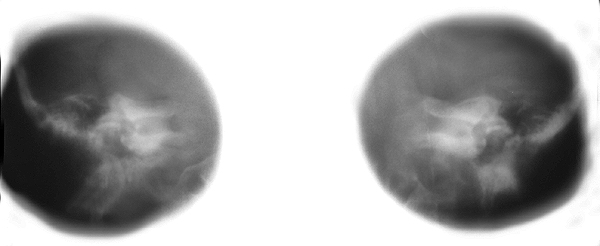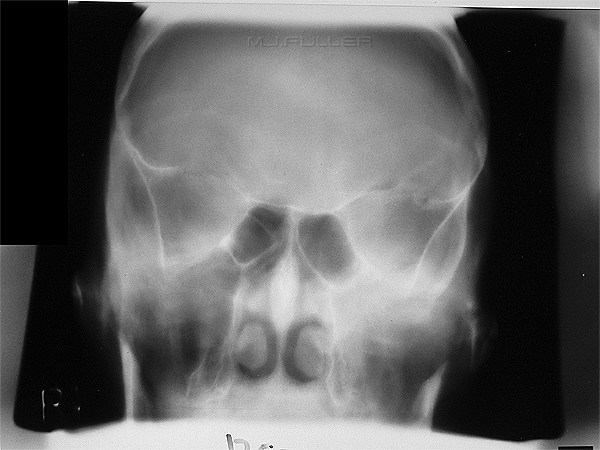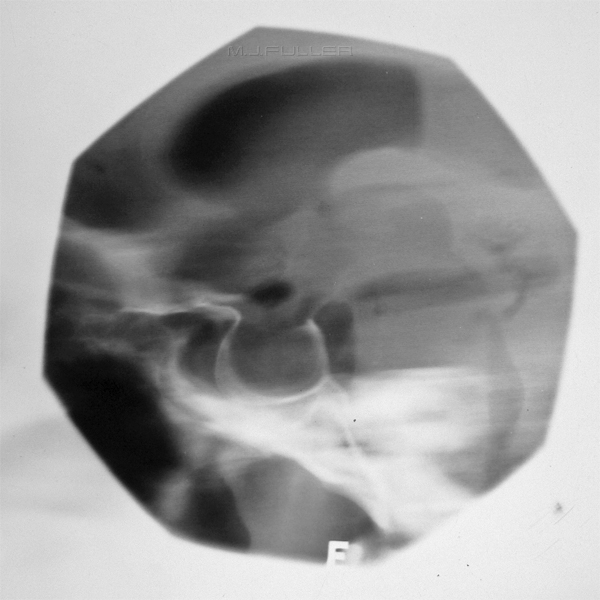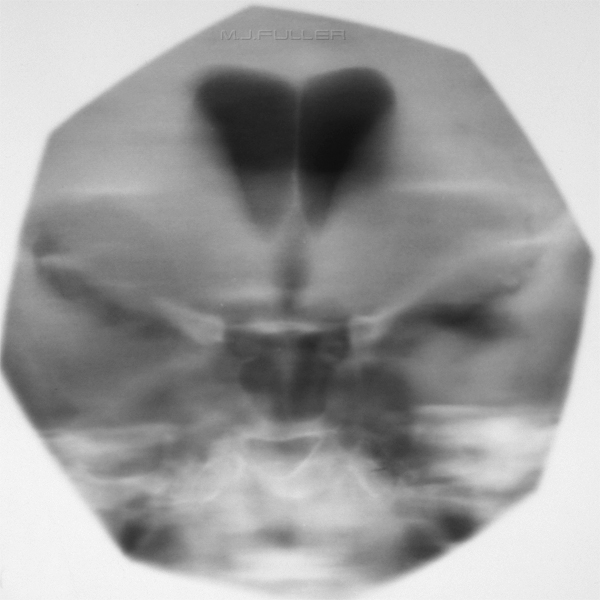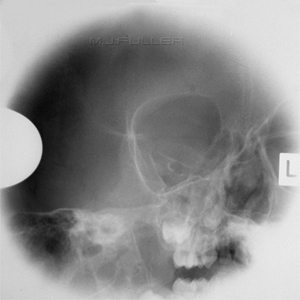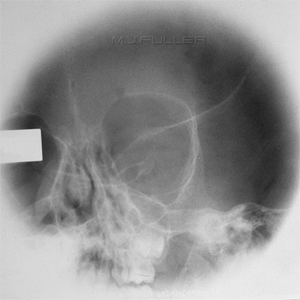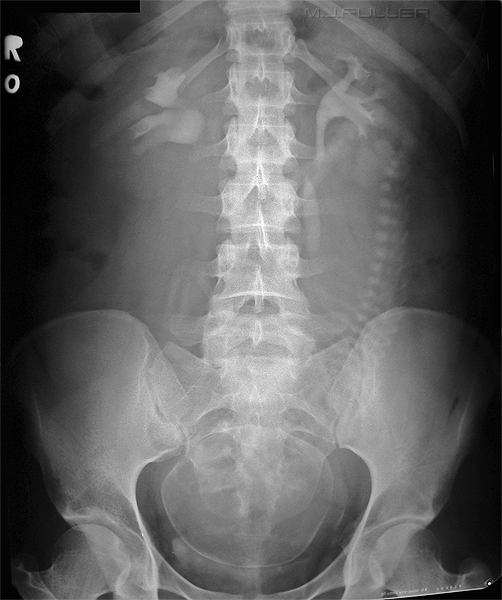Passe Radiography
This page takes a nostalgic look at plain film radiographic techniques that are becoming increasingly uncommon or have become completely extinct.
Tomography
Tomography refers to a radiographic technique in which a section of the patient is imaged in focus. The patient's anatomy that is within the field of view and that lies outside the focal trough will appear blurred. This technique requires tomographic equipment (or a tomographic attachment). One of my favourites was the Philips Polytome. This was as close as you get to a plain film machine that was fun to use. It is not feasible to provide examples of all of the possible uses for plain film tomography- suffice to say that there were numerous applications. What is the plain film tomography examination that is still commonplace?
Internal Auditory Meatus Tomography
Facial Bone Tomography
This is a coronal cut facial bone tomogram.
CT is the current gold standard
Air Encephalogram
Optic Foramen
Full Term Urogram (IVP/IVU)
.... back to applied radiography Home Page
